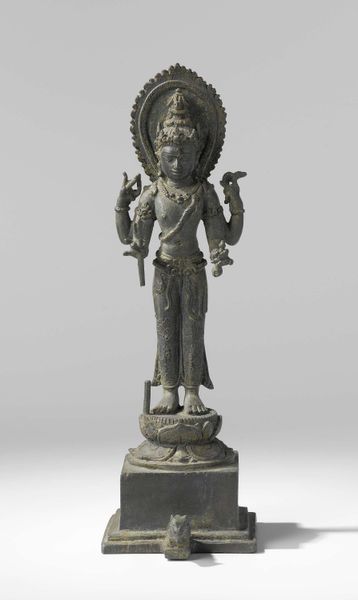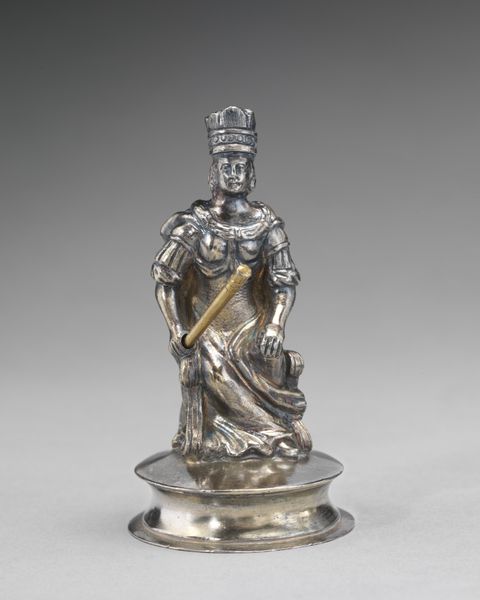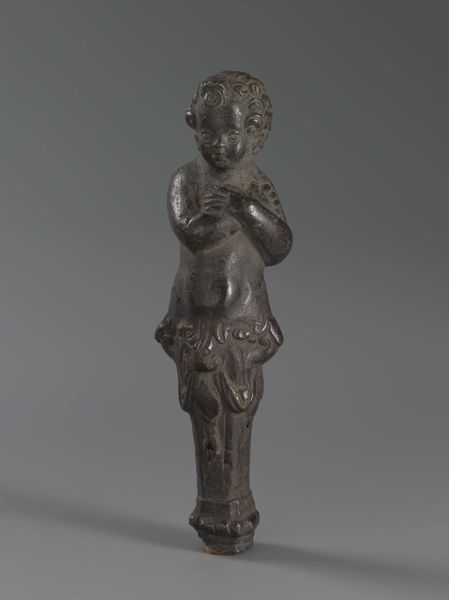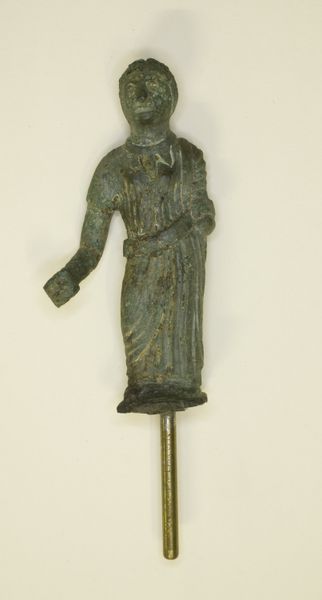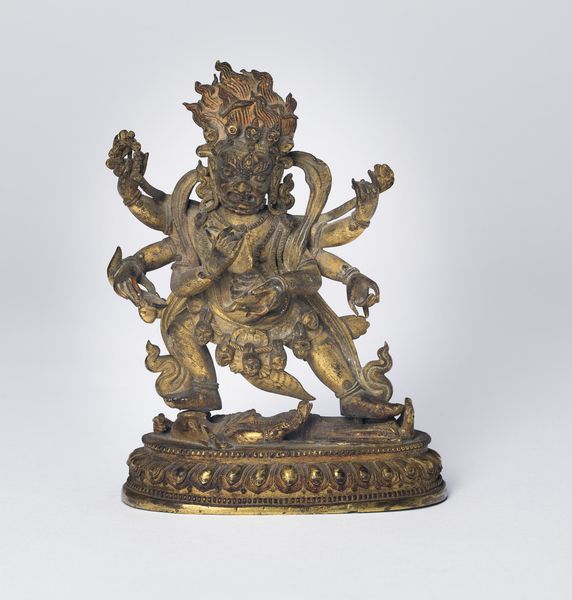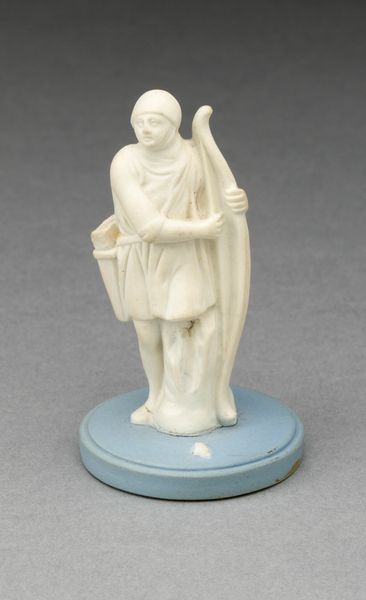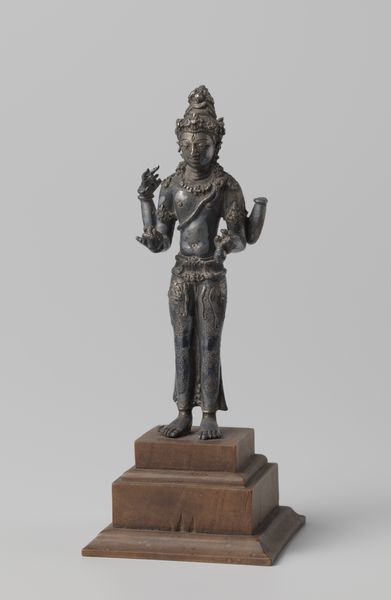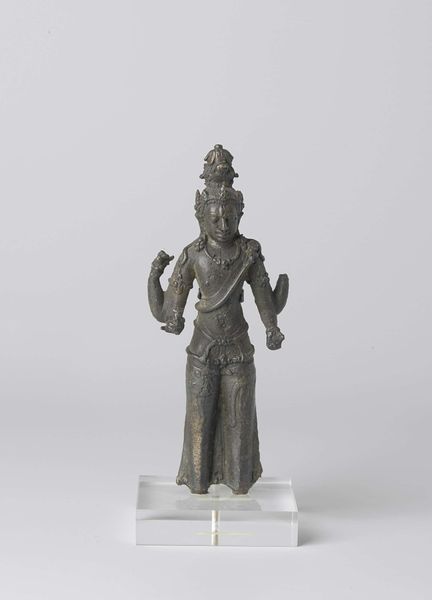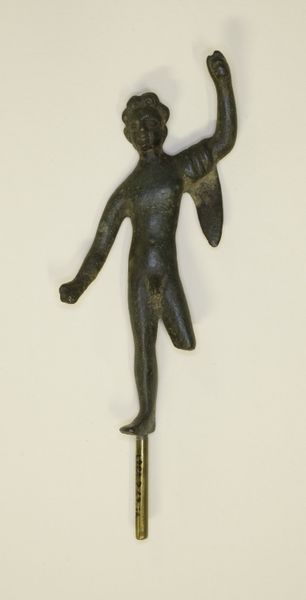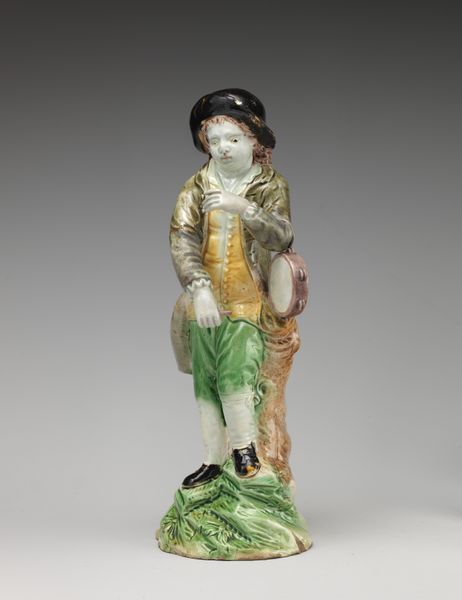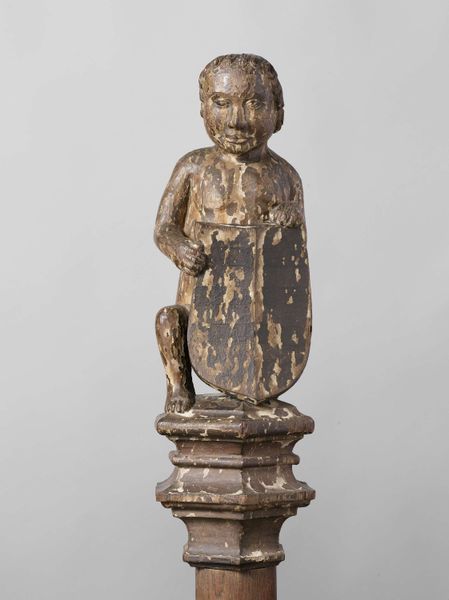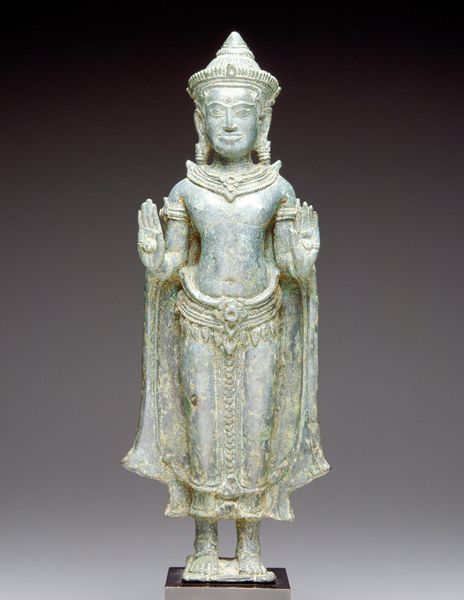
bronze, sculpture
#
portrait
#
asian-art
#
bronze
#
figuration
#
geometric
#
ancient-mediterranean
#
sculpture
Dimensions: height 11.5 cm, width 5.0 cm, weight 154 gr
Copyright: Rijks Museum: Open Domain
Curator: Let's turn our attention to this bronze sculpture titled "Shiva, Parvati, and Ganesha," dating back to the 9th or 10th century. It's currently held at the Rijksmuseum. Editor: My immediate reaction is one of serenity, despite the intricate details. The patina of the bronze lends a quiet dignity. The scale feels intimate, drawing you into the delicate forms. Curator: Precisely. The fact that this sculpture, though depicting divine figures, was crafted using the lost-wax casting process speaks volumes about the labor and communal effort involved. The availability and control of bronze resources during that period also provide valuable context. Editor: Indeed, but I'm particularly drawn to the formal qualities. The balanced symmetry of the figures, especially Shiva's multiple arms, creates a visual harmony. Note the circular halo behind his head – a recurring motif signifying divinity and perfection. And see how the sculptor balances geometric forms with flowing lines to create the garments, ornaments and crowns? Curator: And how these geometric forms intersect and inform labor and the economy—from metal ore extraction and trade, to the workshops that fabricated these icons to supply ever growing Hindu institutions throughout Southeast Asia. Think about the trade routes! This artwork offers so many important historical threads to follow. Editor: All interwoven, undeniably. Even the patina on the bronze itself speaks of time, wear, and the surrounding environment – a testament to its physical and cultural journey. How this artwork persists structurally and semiotically gives it potency. Curator: Reflecting, this sculpture serves as an entry point for understanding complex social and economic relationships tied into the material realities of ancient Southeast Asia. Editor: From my perspective, beyond history, this object offers a powerful study in contrasts. Intricate details, smooth texture, stillness and symbolic dynamism all work together beautifully. It truly elevates bronze work into an important art.
Comments
rijksmuseum about 2 years ago
⋮
Shiva was the most important Hindu deity of ancient Java. Great temples were dedicated to him and images of him were made in stone, bronze, and precious metal. This pair of silver statuettes shows him together with his wife Parvati, the daughter of the mountain. Their son, the elephant-headed Ganesha, was also worshipped in his own right.
Join the conversation
Join millions of artists and users on Artera today and experience the ultimate creative platform.
